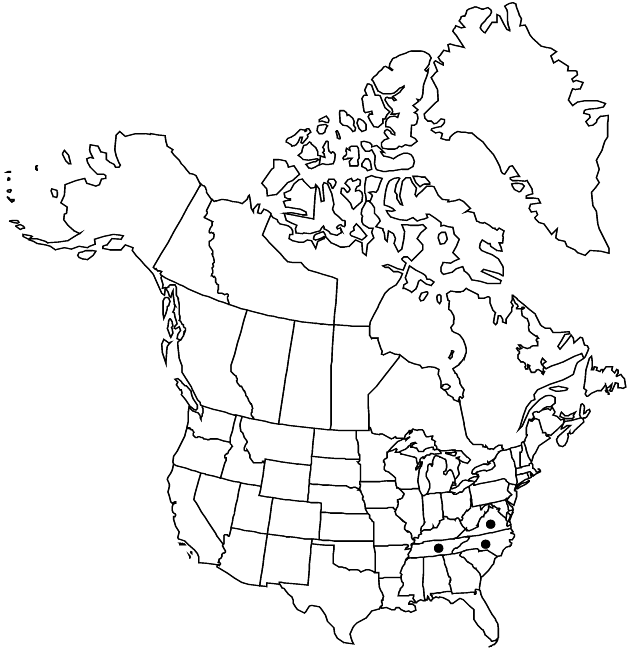Prenanthes roanensis
Bot. Gaz. 6: 191. 1881.
Plants 18–150 cm; taproots slender or short and thickened, tuberous. Stems erect, green or purple, simple, glabrous proximally, crisply tomentulose distally. Leaves: proximal present at flowering; petiolate (petioles not winged or distal narrowly winged); blades ovate, 3–22 × 2–15 cm, coriaceous, bases cordate to truncate or rounded, margins often deeply 3–5-palmately lobed or compound, lobes and sinuses angular, ultimate margins irregularly dentate, apices acute, faces usually finely tomentulose on veins; mid cauline short-petiolate or sessile; distal short-petiolate or sessile, reduced, lanceolate. Heads in narrowly paniculiform or thyrsiform arrays (nodding). Involucres cylindric to narrowly campanulate, 12–14 × 2.5–3 mm. Calyculi of 4–6, blackish green, triangular to lanceolate bractlets 1–3 mm, densely setose. Phyllaries 5–9, green or dark green, apices blackish, linear to oblanceolate, 9–11 mm, sparsely and coarsely setose. Florets 5–7 (–13); corollas greenish yellow, 8–10 mm. Cypselae tan to yellow, fusiform, subterete or angled, 4–5 mm, indistinctly 8–12-ribbed; pappi yellow to whitish, 5–6 mm. 2n = 16.
Phenology: Flowering Aug–Sep.
Habitat: Spruce-hardwood forests, wooded slopes, open grassy summits
Elevation: 1600–1700 m
Distribution

N.C., Tenn., Va.
Discussion
Of conservation concern.
Prenanthes roanensis is recognized by its 5–7 florets and dark setae on the phyllaries. It is found at mid to high elevations in the Blue Ridge Province of the Appalachian Mountains. It is rather variable and often confused with other species. It is considered rare or threatened throughout its range.
Selected References
None.
Lower Taxa
"fine" is not a number.